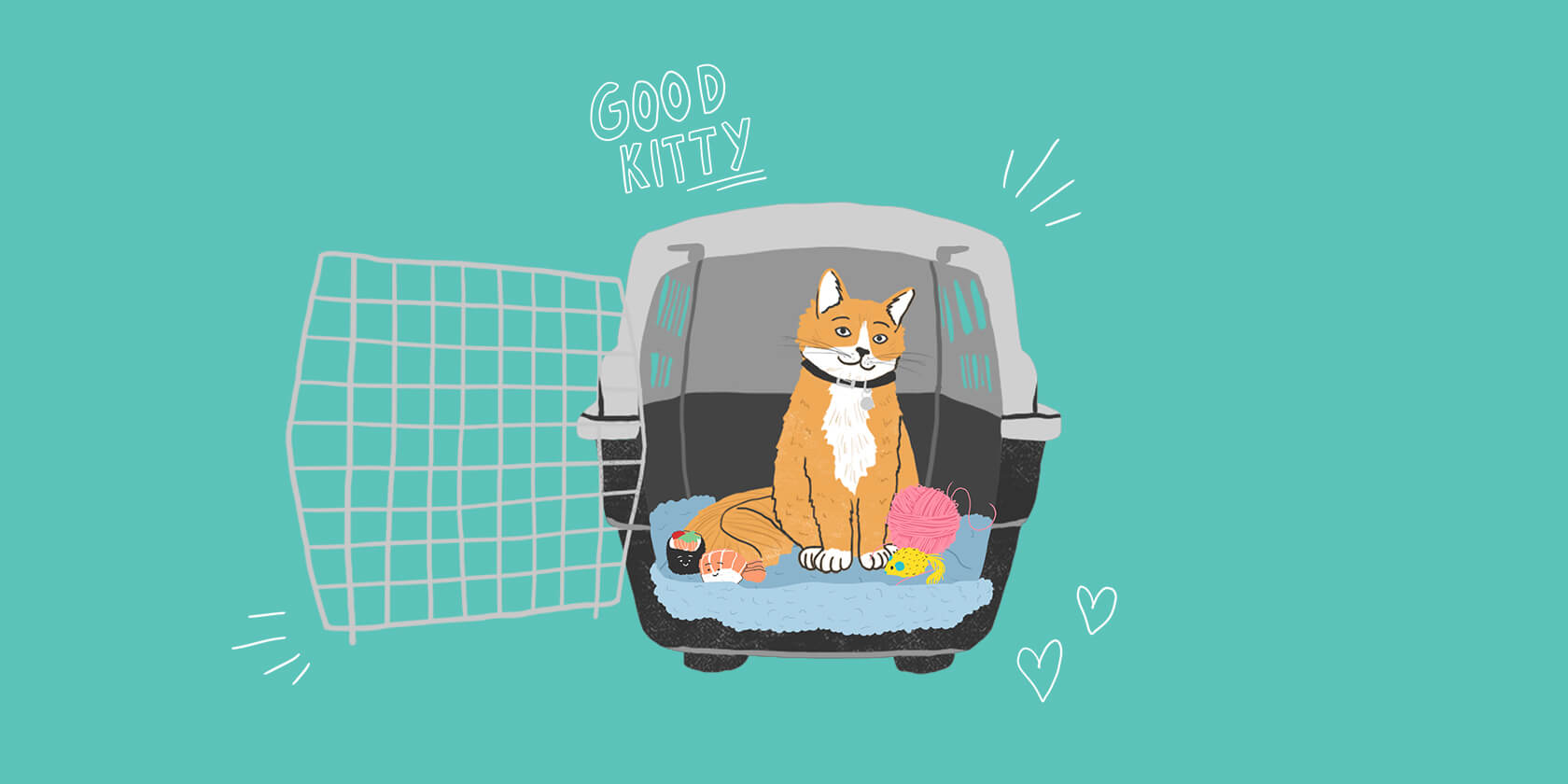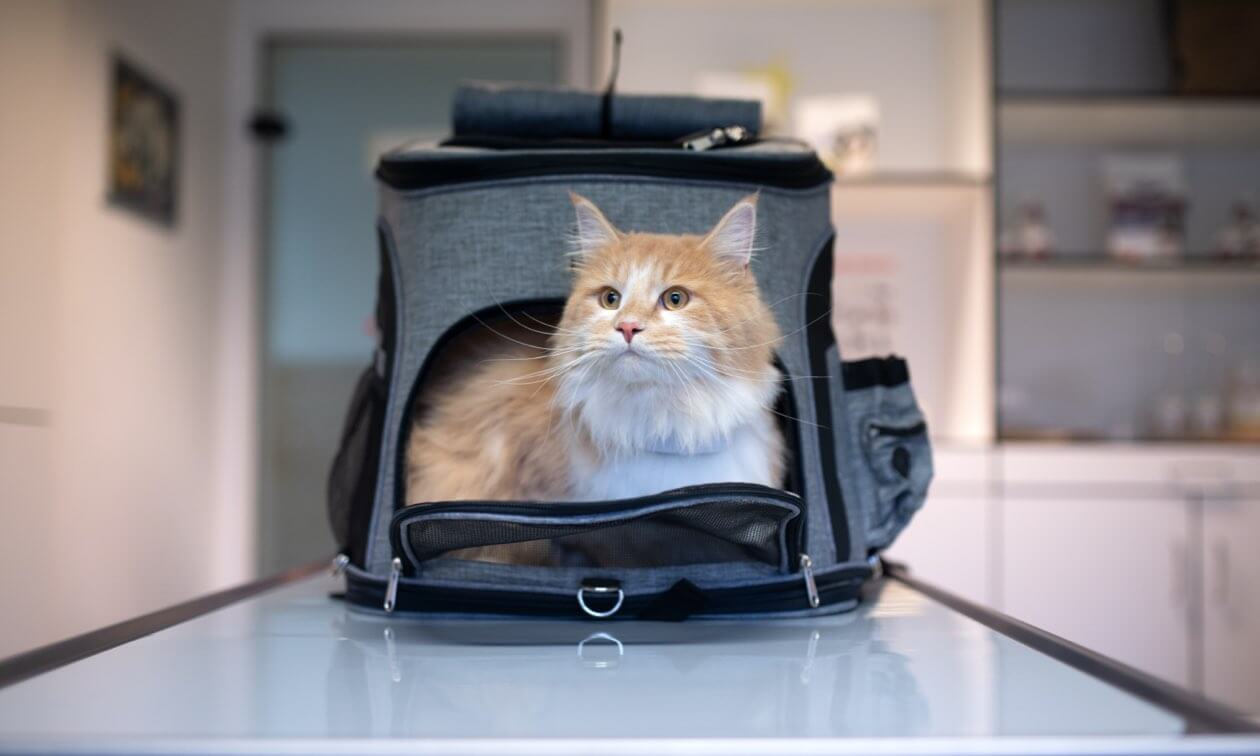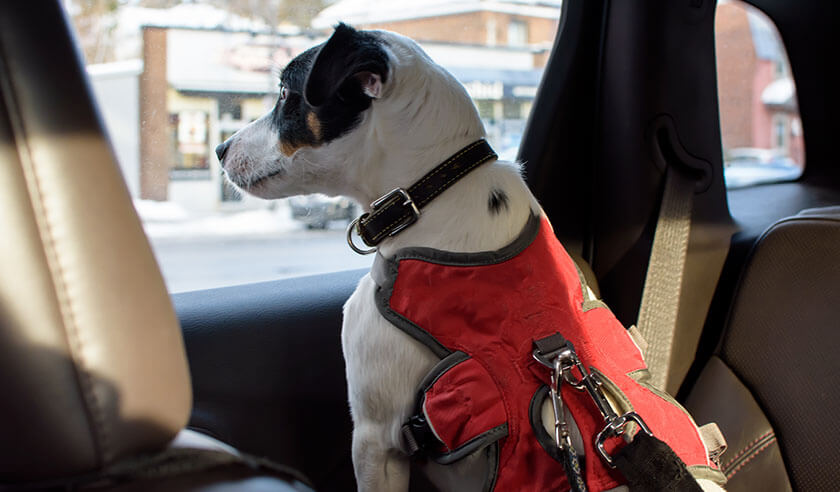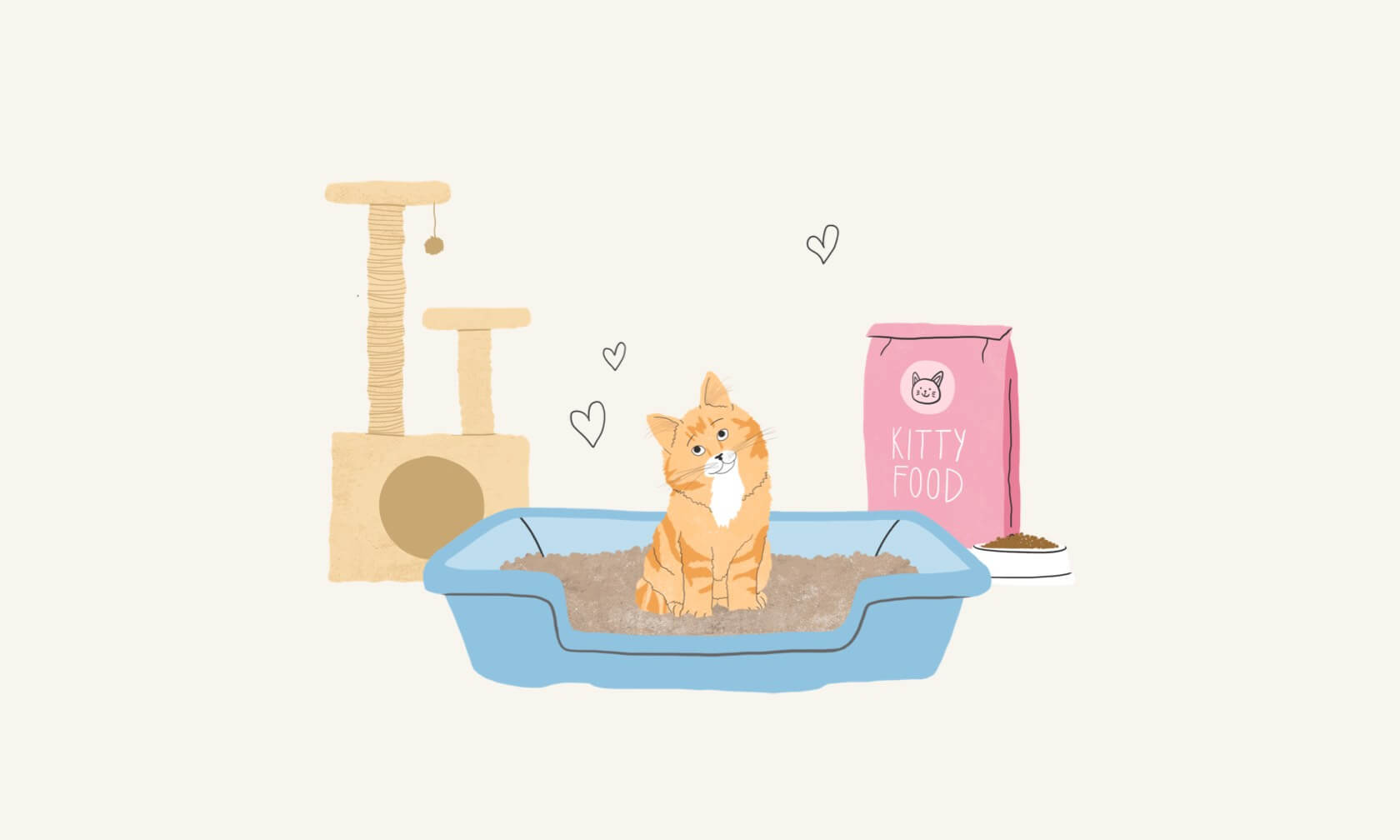The dreaded carrier — a source of fear and anxiety for cats everywhere. Car rides and trips to the veterinarian can be scary for cats (and if they start to worry as soon as they see the carrier come out of the closet, it can make the entire process even more stressful for them and you). There’s a lot you can do to help your cat feel safe and comfortable not only seeing their carrier but spending time in it and with everything that comes next.

Why Are Cats Scared of Their Carrier?
Cats are both predators and prey. They analyze every situation to determine which side needs to take charge to keep them alive. Are they the predator (confident and strong) or are they prey (nervous and exposed)? Being put in a carrier and taken out of their safety zone leaves them feeling like prey and worried about their safety.
Additionally, it’s hardwired into cats to control themselves and their environment. When that control is taken away, they instinctively go on high alert. This means they’re anxious, defensive, and even aggressive because they’ve been put in a situation they didn’t choose, and they don’t know what to expect. Do you ever pick your cat up and put them in their favorite bed just to have them immediately jump out? It’s not that they don’t like the bed — it’s that they didn’t choose to be there. They were placed there. It’s the same idea when they’re put in a carrier.
Getting Your Cat Safely in Their Carrier (Before Training)
It’s important to start getting your cat used to their carrier before they need to use it. If that’s not possible, though, do your best to make the experience as low stress as possible. This approach works for cats who haven’t yet been desensitized to being in the carrier, may be painful or injured, are overweight, or are extra fearful.
- Get the carrier out well before you need it, and place your cat’s favorite treats near, on top of, and inside it.
- Stay calm. If you’re anxious, your cat will be anxious.
- Provide your cat with treats and other things they love before putting them in the carrier.
- If you can lure them inside using a treat or toy, or if they’re easy enough to pick up (supporting all four legs) and place in the carrier without a reaction, that’s great. Calmly close the door and provide another treat as a reward.
- If not, try gently wrapping your cat in a towel or blanket. Start with the towel laid out. Lure your cat onto the towel with a treat or toy. Lift the front right corner of the towel over your cat’s shoulders and around the other side so you can hold that corner with your right hand. Do the same with the left corner, wrapping up and over, bringing it around to your right hand. You now have both corners of the towel in one hand, under your cat’s chin. This should secure all four feet inside the towel, so you’re not at risk of being scratched, and your cat isn’t able to flail as you set them gently inside the carrier.
- If they’re calm, this is a great time to offer praise and a treat before you put them in the carrier and close the door.
- You can leave the towel in with them for security.
- Bonus points if you put the towel in their favorite sleeping spot a day or two before so it has their scent.
- You can also use a calming cat pheromone spray in the carrier 15 minutes or so before putting your cat in the carrier.
Training Your Cat to Be Comfortable in Their Carrier
Hiding the carrier away until minutes before a vet visit, forcing your cat inside the carrier, and then taking them out of the house is incredibly scary (and it creates negative associations with the carrier).
You can replace these with negative feelings with positive associations by giving them a choice, slowly exposing them to interacting with the carrier, and making good things happen when they do.
- Make the carrier part of their everyday life. Place it in your cat’s core territory and leave it out all the time, so they get used to seeing and smelling it regularly.
- Open the door(s) or flaps. If it’s the kind with a detachable top, remove the top for a while, so it’s a bit less intimidating.
- Place treats near the carrier and, as they get comfortable, on top of and inside it. Give lots of verbal praise when they investigate it. Have a play session in and around the carrier. Put a bed or blanket in there to make a cozy cat cave.
- Avoid forcing your cat near, in, or on the carrier. Remember, if they choose to interact, they’ll be more comfortable and receptive.
- Gradually start to entice your cat to step inside the carrier. You’ll leave the door completely open for now. You can toss a favorite treat or toy to lure them in. Never force them. They will instantly retreat and rebuild those negative associations. If they’re still nervous, start a few feet away and gradually toss the reward closer and closer to the door as they’re comfortable approaching it.
- Keep training sessions short — a few minutes at a time. Reward every step in the right direction, even it’s just your cat taking a single step toward the carrier. Always end on a positive note.
- Over time, you’ll progress to tossing the treat inside the carrier and your cat willingly stepping all the way in. At this point, you can start closing the door. Be careful not to push past your cat’s comfort level. Start by pushing the door closed and immediately reopening it and rewarding your cat. If they show any sign of stress at all, they aren’t ready for this step yet. Take a step back to where they were last relaxed and eager to participate and start moving forward again.
- Continue very gradually increasing the amount of time you close the door, in tiny increments so small your cat doesn’t even realize they’re spending more and more time in the carrier. Before you know it, your cat is relaxed in the carrier with the door closed.
- Keep the rewards coming throughout the entire process and always go at your cat’s pace. They will tell you when you’ve moved too quickly. Watch their body language.
The great thing about this technique of gradual exposure paired with rewards is that you can apply it to anything that makes your cat uncomfortable. Go from training them to be in the carrier in your home, to opening the front door, stepping outside then right back in, a few steps, opening the car door, sitting in the car for a minute, then five, starting the car, and so on to keep this momentum going. Always provide a big reward when they get back home.
ZPC-01673





